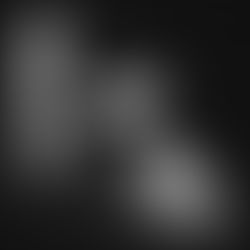Fernando Reyes Review in Artweek
- Sharon Reaves
- Jun 17, 2009
- 3 min read
Fernando Reyes “Sweet Dreams” at Reaves Gallery, SF
ARTWEEK June 2009 Volume 40 Issue 5
Two specters, or rather dogmatic assumptions, are haunting the art world. First, due to modernist history, we assume that serious art must be innovative, even shocking — Oedipal repudiations of history. Art revolutionaries claim to have superseded their predecessors, arriving at the ultimate reality, or at least a new reality; of course the generally fail to render their predecessors moot or mute, or to end art, though they often
succeed in expanding art’s boundaries. Picasso, no slouch at appropriation, rejected the Avant Garde’s dustbin theory of art, asserting that once something is art, it remains art forever; perhaps Harold Rosenberg’s experimental and self-doubting “anxious objects,” now accepted into the canon, can discontinue therapy at last. The second myth, more recent in origin, is that artists must follow a career track involving certain schools, professional contacts, galleries, museums, magazines and collections — and that anyone not well along that Parnassian path by age thirty-five or so should find something else to do, the window of
opportunity having slammed shut. Art is a capitalist venture, and likely to remain so, but not everyone has to or should fit the current cultural-production model.
Fernando Reyes of Oakland is one such atypical artist, having come to drawing, painting and printmaking after seventeen years of employment as a San Francisco banker. (Gauguin, too, made a false start in the financial world, as did Koons) After studies at the School of the Art Institute of Chicago, Reyes returned to the Bay Area, settling in Oakland’s Jingletown, where he explores such decidedly traditional realms as realist landscapes and realistic, abstract or symbolic figure studies. His paintings and woodcuts are based on linear figure drawing and the classical tradition of the heroic nude, with the body seen as container for the soul and mortal locus of power and pathos, the tradition explored with very different inflections by Rodin, Schiele, Bacon and Freud.
While Reyes builds on the classical tradition, however, he also subverts or modernizes it, incorporating the superimposed multiple views of cubism and futurism, the implied narratives of surrealism, with its “literary” propensities, and the distortions of expressionism. In Reyes’ Daydreamer (2008) figure paintings, single nude men or women are posed like classical statuary before abstract patterns that suggest the psychedelia, Pop Art and super-graphics of yesteryear, their faces obscured by mask-like forms, actually out-of-register faces from Reyes’ woodcuts. Here the sense of unitary identity implied by conventions is sabotaged. The slipped or elided face is a Baconian motif, of course, and the angular mask derives from Africa via Picasso. Are these figures dreaming, remembering, or reflecting? In addition, the figures wear clothing (hats, flowers, striped gloves and stockings) more suited to figure-drawing class than to the symbolic nude’s programmatic attributes — scepters, laurel wreaths and the like. Reyes’ “body language” paintings, combining superimposed figures into linear mazes or thickets that verge on Pollock-like abstraction, suggest both a cast of characters engaged in an obscure drama,an authorial contrivance, and the timing of photographic exposure, with its acceptance of the randomness of the world. Reyes complicates the reading of these ambiguous works by painting the shapes created by overlapping contours with arbitrary and non-descriptive, color. His images remain firmly ensconced within the pictorial conventions of the figurative tradition (although, due to changing community standards, they are now anatomically correct) in order to depict contemporary consciousness, fractured and contradictory.
—DeWitt Cheng
DeWitt Cheng is a freelance writer based in San Francisco
Fernando Reyes,
Daydreamer II, 2008, oil, collage, woodcut on canvas 47”x 47”


























Comments